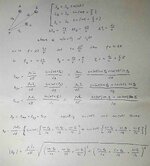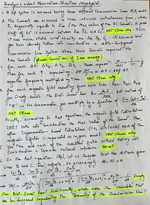Nils227
Junior Member level 2
Hello,
Assuming that we have a single-phase electrical transmission line (short distance (< 50 km), stranded, non-isolated, made of aluminum conductor steel reinforced), I would like to know the resulting magnetic field (shape, structure, absolute value, and all other possible details) when the line is being injected by different RMS values of an AC current of 50 Hz. It is intended to have a mathematical model formulation of the resulting magnetic field, so that it is possible to know the Tesla value of the magnetic field directly when the RMS value of the injected current is known.
In other terms, I am looking for the Biot-Savart formulation but for an AC current (instead of DC).
Any comments or possible related book chapters will be much appreciated
Thank you
Assuming that we have a single-phase electrical transmission line (short distance (< 50 km), stranded, non-isolated, made of aluminum conductor steel reinforced), I would like to know the resulting magnetic field (shape, structure, absolute value, and all other possible details) when the line is being injected by different RMS values of an AC current of 50 Hz. It is intended to have a mathematical model formulation of the resulting magnetic field, so that it is possible to know the Tesla value of the magnetic field directly when the RMS value of the injected current is known.
In other terms, I am looking for the Biot-Savart formulation but for an AC current (instead of DC).
Any comments or possible related book chapters will be much appreciated
Thank you


